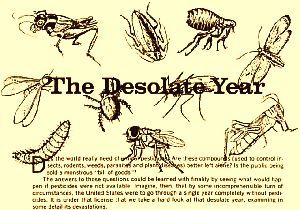“If you write what you yourself sincerely think and feel and are interested in, the chances are very high that you will interest other people as well.”
—Rachel Carson, from The House of Life
“‘Here you are, alive. Would you like to make a comment?’”
––Mary Oliver, Long Life
Empowering yourself as a writer, Rachel Carson suggests, involves sincerity and interest. When your mind is fully engaged (thinking, feeling, interest) with what you are doing, readers are likely to notice. And as the poet Mary Oliver’s question reminds us, we are in the world (“we are it–– / it sings through us,” Gary Snyder says) and our experience in the world is an open invitation for thought and expression.
1
My reflection on our writing process is intended to prepare you for the revisionary work you will be doing over the next two weeks: rereading your essays and articulating the integrity of the essays as a sequence. My words are also designed to help inform your choice of one of your essays for revision that will appear in a class publication on writing in an endangered world.
Let me begin with an overview of our work together this semester:
- reading books—real books, books that are distinctive, books that have unsettled the minds, hearts, and spirits of generations of readers
- wrestling with ideas—“the control of nature,” “exploitative mind,” “two-dimensional dreams,” “wildness,” “compassion,” “ecology,” “work,” and so on
- gathering evidence—not merely “kick-ass” quotes but also engaging in the art of elaborating connections among words and phrases and sentences in the books we are reading, as well as other experience, texts, and contexts
- sharing your experiences as a reader through written work—offering testimony to the power of language and the constitutive place of ideas in our lives
Your essays on each of the books––your wrestling with the ideas with which the books are wrestling––each depend on your thinking, feeling, and interest in language and ideas. If you are less interested, then it is likely that the essay will be less interesting. And it may be that you spent less time on the essay than you might have.
You can hear the difference. That is, you can sense when a writer is engaged. As my friend and colleague Scott Russell Sanders explains in his essay “The Singular First Person,” when writing an essay I am attempting to “speak directly out of my life into the lives of others.” Of course essaying out of one’s life and into the lives of others, we might do well to keep in mind what Sanders adds, that “you had better speak from a region pretty close to the heart, or the reader will detect the wind of phoniness whistling through your hollow phrases.”
So the opportunity you have in the final weeks of the course is to disclose and to elaborate your engagement by 1) rereading and revising and editing the collection of essays you have produced for the course, and 2) choosing one of your pieces as a feature essay. We will collect these featured essays in an anthology that I will make available as a class publication.
2
The books on our reading list were composed by people who were reading and thinking in a specific sociological, cultural, and historical context— writing in what we have called “an endangered world.” As a writer, you may be more interested in these conditions of literary production—such as the challenges Rachel Carson faced as a scientist and a woman, the dominant cultural discourse of agriculture that Wendell Berry critiques, or the “way of knowing” of indigenous women in Linda Hogan’s novel Solar Storms.
At the same time, readers of books live in specific sociological, cultural, and historical contexts; and, as a writer, your attention may be drawn to literary reception—for example, how readers might make sense of Linda Hogan’s Solar Storms when considering massive hydropower projects as “clean” energy or how readers might respond to T.C. Boyle’s Tortilla Curtain during the immigration debates in California during the 1990s or in the more recent political discourse about immigrants and immigration. Whether you are writing about the making (production) of books or the reading (reception) of books, you are always faced with the ways that language in the books we come to call literary make available something that is not available elsewhere.
One way to say this is that literature is news that stays news. It is language that we turn to when ordinary language does not carry us beyond our understanding. Literature is equipment for living, too, because literary artifacts focus our attention, challenge our thinking, and offer practical ways to think about our lives, other lives, and the world. For example, we considered a question about form that I wrote to frame our discussion of Gary Snyder’s poems from the 1970s: “How does Gary Snyder’s Turtle Island,” I asked, “use language to clarify our relationship to the earth?” Or as the poet A.R. Ammons (from a 1989 interview with William Walsh) writes “. . .the poem is a verbal construct that we encounter, learn from, make value judgments with, and go on to sort out possibilities in relation to our lives in order to learn how to live.” When you sat down to write out your thoughts about how Snyder uses language to clarify our relationship to the earth, then, your commentary was describing your encounter, telling the story of what you are learning, and considering the ways a poem might offer a way to consider values and sort out possibilities about your life, and the world, “in order to learn how to live.”
An additional consideration for you in the coming weeks is the matter of writer-centered as opposed to reader-centered prose. We have talked about this distinction. But as you work on revising your essays in your portfolio, and select an essay from your sequence for publication in our class anthology, you need to challenge yourself to be present to the world beyond your self. This is a formidable problem for a writer. For how does one write with what Carson calls “sincerity” (without leaning too much on a posture of authority or objectivity) when taking up issues and questions that matter to others. How does one write without without making ideas simply a version of our own personal story?
One answer to this question comes from William Cronon, who we read last week week. For Cronon, an environmental historian, writing about the past is a form of storytelling. “As storytellers we commit ourselves to the task of judging the consequences of human actions,” he writes, “trying to understand the choices that confronted the people whose lives we narrate so as to capture the full tumult of their world.” What Cronon then describes is how these stories from the past help us to discover our own. “In the dilemmas they faced we discover our own, and at the intersection of the two we locate the moral of the story. If our goal is to tell tales that make the past meaningful, then we cannot escape struggling over the values that define what meaning is.”
3
I am writing just after reading your essays on Gary Snyder’s 1990 collection The Practice of the Wild. And I am excited by what your writing is doing. The writing is making visible sincerity, feeling, and interest. Your presence as writers engaged with ideas has developed since we began working together over ten weeks ago.
Both on the path, and off the trail. As you finish your essay sequence, and refine your featured essay, keep in mind that you are making these books, and your experience reading them, meaningful both to you and for others. If the books we are reading matter, who should read them and why? If literature is equipment for living, as Kenneth Burke once said, then how might you thoughtfully and generously share the books we have been reading to help all of us learn how to live?
Work Cited: William Cronon, “A Place for Stories: Nature, History, Narrative.” The Journal of American History 78 (4): 1347–76.
Photo credit: Mark C. Long





























